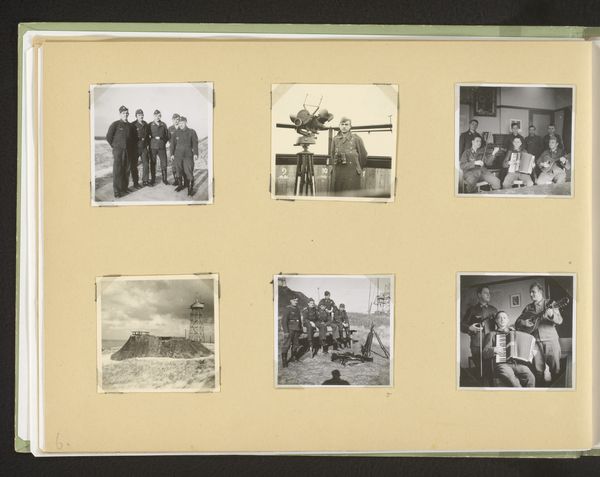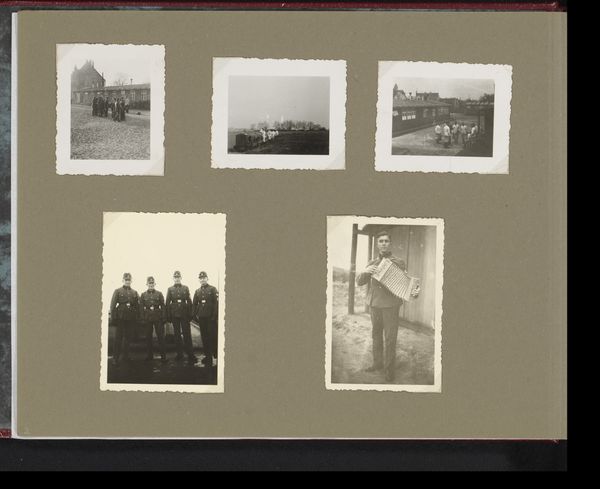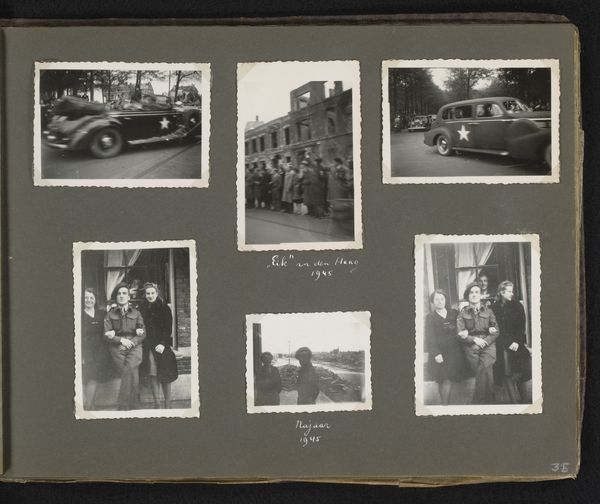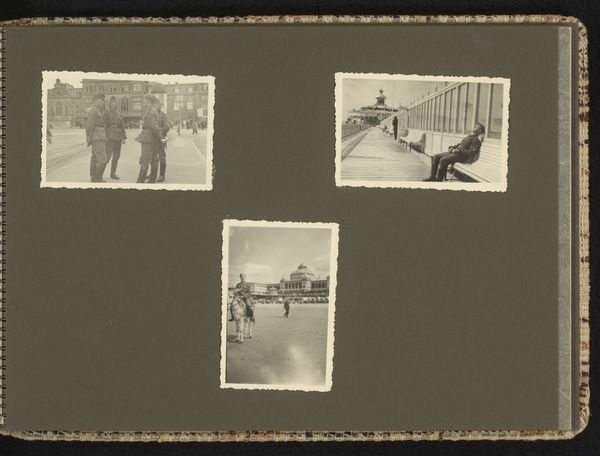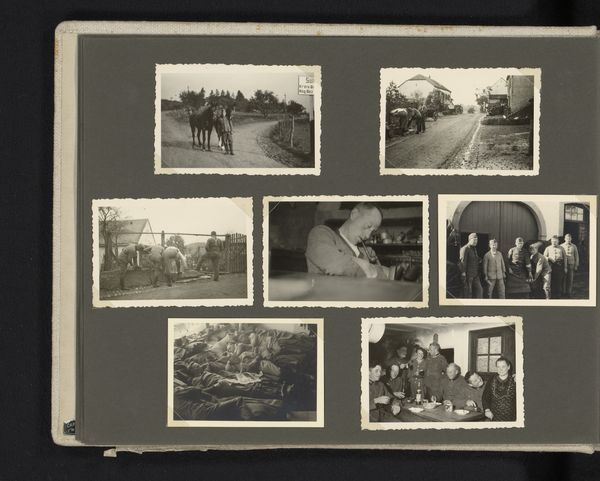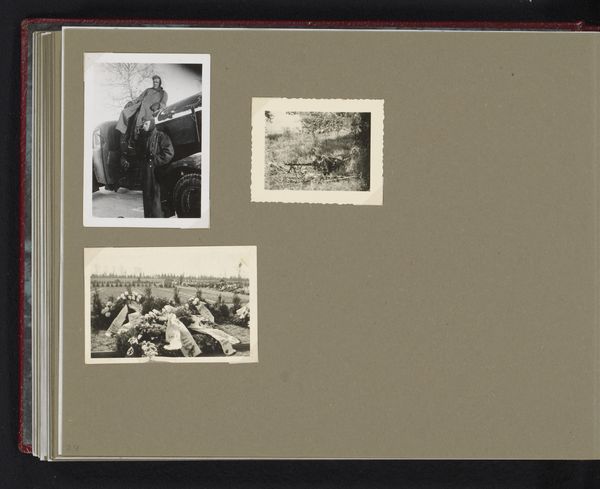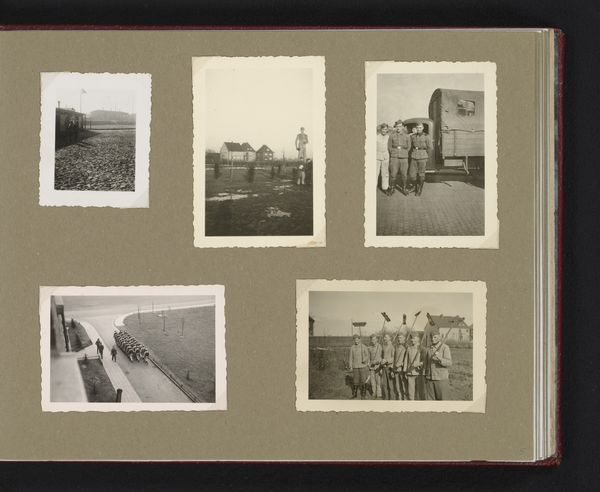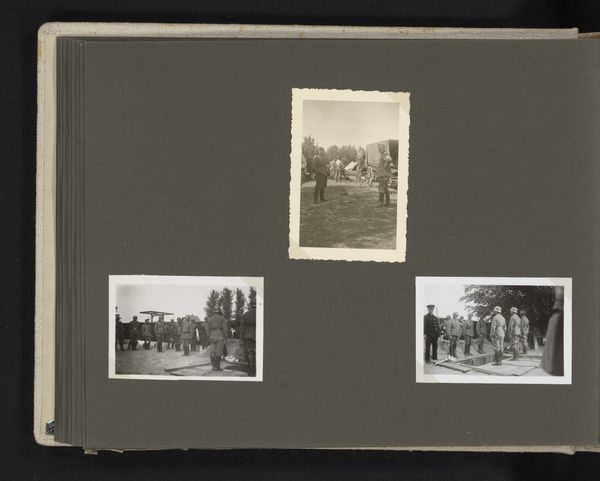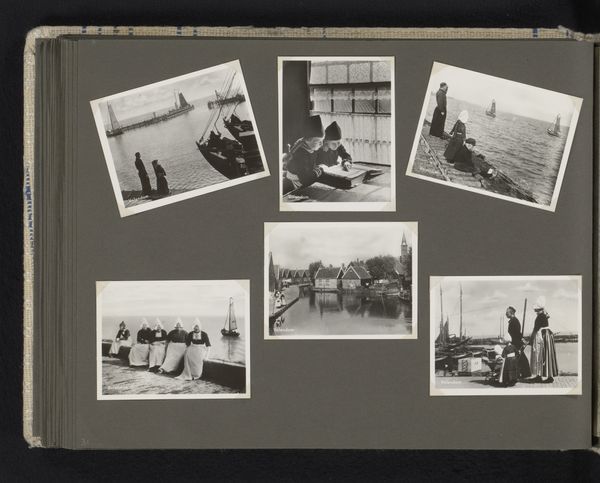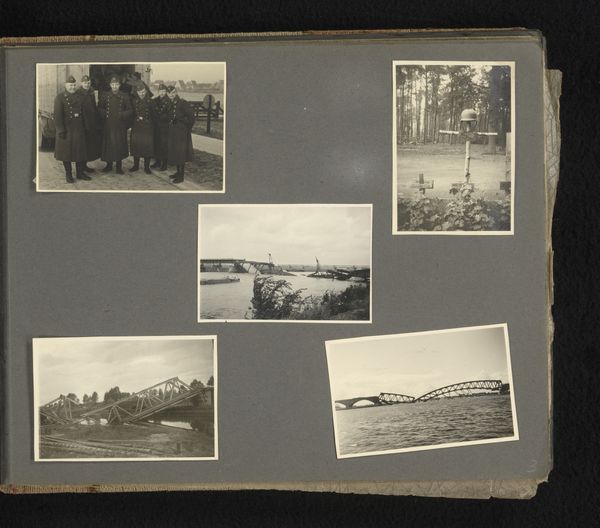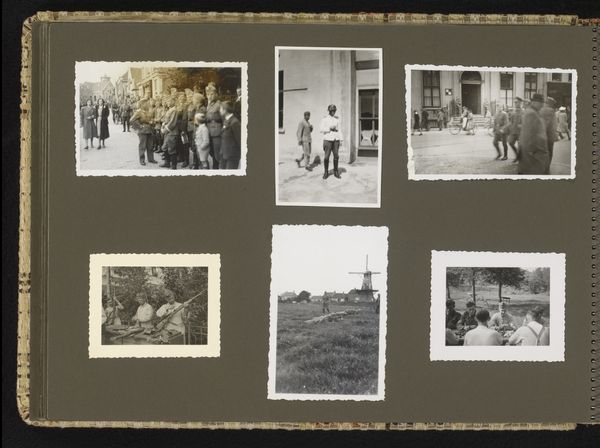
Dimensions: height 65 mm, width 95 mm, height 210 mm, width 290 mm
Copyright: Rijks Museum: Open Domain
Editor: This gelatin silver print, “Duitse militairen in Amsterdam,” translates to German Soldiers in Amsterdam and was created sometime between 1940 and 1945. It depicts several snapshots of German soldiers during the occupation. The images, placed on a page, create a stark juxtaposition – the beauty of Amsterdam as a backdrop to the occupiers. How does understanding the history surrounding this image impact how we view it? Curator: Significantly. Looking at this image through a historical lens, it becomes a chilling document of the Nazi occupation of Amsterdam. The presence of German soldiers against the backdrop of a familiar cityscape highlights the disruption of daily life and the imposition of foreign power. It also speaks to the power of propaganda and control of imagery. Editor: Propaganda, how so? Curator: Well, consider the composition. These aren't images of fierce battle; they're relatively calm, even serene. This may reflect an attempt to normalize the occupation, projecting an image of order and control rather than one of conflict and oppression. Do you think the photographer was trying to present a specific narrative? Editor: That's fascinating! It does feel like a constructed reality. I hadn’t considered the photographer's potential bias. It makes me wonder who took these pictures and why. Curator: Exactly! And who was the intended audience? Were these images meant for internal consumption within the Nazi regime, or were they designed to influence public opinion, either in the Netherlands or abroad? These questions guide us to understand art's place in social control and power dynamics. Editor: Thinking about it as a curated presentation of power shifts my perspective entirely. I see how history shapes the reception. Curator: Indeed. And understanding that historical context allows us to critically analyze the photograph not just as an image, but as a piece of historical evidence, fraught with complexities and political implications. It really makes you think. Editor: I definitely learned to see this photograph as a complex historical statement.
Comments
No comments
Be the first to comment and join the conversation on the ultimate creative platform.
